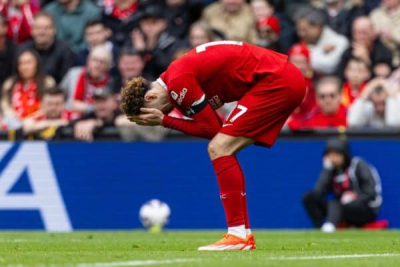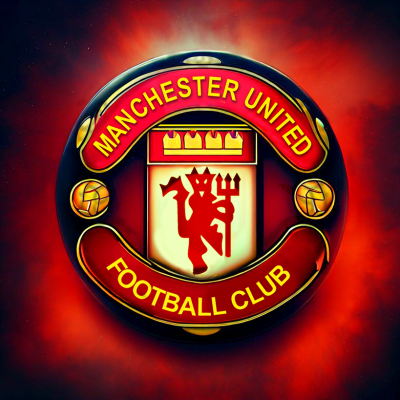Football News: A To Z: Celtic
Image from: freelargeimages.com
A To Z - Celtic
A is for Aberdeen
When the Bhoys beat Aberdeen in the Scottish Cup final in 1937, the crowd set a record attendance for a club match in Europe which still stands to this day. 146,433 were crammed into Hampden Park to see Celtic lift the cup.
B is for Billy
Legendary Celtic captain Billy McNeill went out at the top as a player, retiring in 1975 after winning the Scottish Cup. He had played 790 competitive matches for the Bhoys, a club record. He then was the man brought in to replace the unreplaceable, as he was the chosen successor to Jock Stein as Celtic manager in 1978, winning the league title in his first season in charge in dramatic circumstances with a 4-2 win over Rangers in the final match of the season with just ten men after Johnny Doyle was shown a red card in the early stages of the game.
C is for Coronation Cup
In 1953 Celtic played and won the Coronation Cup, which was an invitational tournament for the best teams in Scotland and England to celebrate the crowning of Queen Elizabeth II. Celtic beat Hibernian in the final 2-0 in front of 117,000 people at Hampden Park.
D is for Dalmarnock
Celtic's original ground was on Dalmarnock Street (now Springfield Road) until they moved to the current site, which is on the edge of the Eastern Necropolis. Dalmarnock coming from the words dael and muranach, meaning a meadow or plain abounding in bent or iris.
E is for Empire
Celtic needed extra-time in the final to beat Everton 1-0 and win the Empire Exhibition Trophy in 1939.
F is for Feyenoord
Celtic did reach the European Cup final on more than one occasion, the second time in 1970 after beating Leeds United 3-1 on aggregate in the semi-final. Unfortunately for the Hoops, they lost 2-1 in extra-time for Feyenoord in Milan.
G is for Gil
In 1951 Gil Heron, the Black Arrow, became the first black player to play for Celtic. He made his debut on 18th August 1951 in a 2-0 win over Morton in the League Cup.
H is for Hoops
Celtic are well known for their green hoops on a white shirt, but that famous strip was actually copied from that of a junior club called St Anthony's. Oddly enough St Anthony's hail from the Govan area of Glasgow, where Rangers are based.
I is for India
In 1936 Celtic signed the first ever Indian player to play for a European club in the shape of Mahammed Salim.
J is for Jimmy
Jimmy McGory set a goalscoring record that even greats like Henrik Larsson were unable to match when he retired with 468 goals in 445 appearances for Celtic in 1937.
K is for Kelly
Celtic's first captain was Jimmy Kelly, who remained club captain until 1897. As captain he led the Bhoys to their first Scottish, League title and their biggest ever scoreline, an 11-0 win over Dundee.
L is for Lisbon
On 25th May 1967, as every Celtic fan knows, Celtic won the European Cup by beating Inter Milan 2-1 in Lisbon with a team made up of local lads. The Lisbon Lions, as they are known, were the first non-Latin and the first British side to win it. They did so under the stewardship of Jock Stein and, in his own words: "We did it by playing football. Pure, beautiful, inventive football." That season they won every competition they entered.
M is for Maley
The 1900s saw Willie Maley, as secretary-manager, lead the Hoops to five titles and four Scottish Cup, plus ten further pieces of minor silverware. It was the period when Rangers emerged to replace Queen's Park as Celtic's main rivals. It was also, in 1903, when the Hoops became the Hoops by wearing their hooped shirts for the first time.
N is for Nine
In 1974 Celtic won the Scottish League championship for the ninth season in a row. The titles spanned the Lisbon Lions era and into the Quality Street Gang's time in the sun.
O is for O'Neill
Willie O'Neill became Celtic's first-ever substitute used on 3rd September 1966 when he replaced Jimmy Johnstone in the second-half of a League Cup tie against St Mirren at Love Street.
P is for Paradise
Celtic fans refer to their ground as Paradise after someone remarked "it was like moving from the graveyard to Paradise" when the club moved to the new location from their original site.
Q is for Quinn
Jimmy Quinn is a Celtic legend who was a shy miner who joined as an outside left and went on to become the key figure of a side, as centre-forward, that achieved six-in-a-row between 1904-10. Only four players have ever scored more goals for Celtic, three of them playing in an era with extra fixtures in the shape of League Cup ties and European fixtures. Quinn signed for Celtic on 12 January 1901 and made his debut a week later in the final league game of the season, scoring in a 4-3 win. The Mighty Quinn, as he was known, even managed a hat-trick against bitter rivals Rangers in the Scottish Cup final in 1904 as the Bhoys came back from 2-0 down to win. After hanging up his boots, Quinn returned to the coal mines of Croy to work. In the 1960s his grandson of the same name also played for Celtic.
R is for Riot
The 1909 Scottish Cup final became known as the 'riot final'. Celtic were chasing a third successive league and cup double and faced Rangers in the final of the Scottish Cup. A draw at the end of a replay left supporters, and most players, expecting extra-time to be paid. Instead the SFA saw a chance to make some more money from fans and ended the game. Fans were unhappy at the prospect of paying for yet another game and they rioted, leading to the cup being withheld for that year.
S is for Somersault
In 1925 Patsy Gallacher scored what is known as his "somersault goal" when he leapt over defenders and into the Dundee net with the ball between his feet to score Celtic's first goal in a 2-1 Scottish Cup final win.
T is for Thistle
No story of Celtic is apparently complete without a mention for the shocking 3-1 defeat at home to Inverness Caledonian Thistle under John Barnes. It led to probably the most famous headline in Scottish history: Super Caley Go Ballistic Celtic Are Atrocious (though it was only a slight rewrite of a much earlier headline - Super Calley Goes Ballistic, QPR Atrocious regarding Ian Callaghan at Liverpool in the 1970s). Unsurprisingly, the defeat led to the plainly inept John Barnes being sacked shortly afterwards.
U is for Unwilling
Scotland's move to introduce numbers to the back of shirts in 1960 found Celtic unwilling to comply, as chairman Robert Kelly claimed it would deface the distinctive look of the Hoops. Instead they put numbers on their shorts in an attempt to get round the regulation.
V is for View
Celtic View was launched in August 1965 as a four-page newspaper and is still being produced today. It is the oldest weekly football club magazine in the world.
W is for Walfrid
On 6th November 1887, Irish Marist, Brother Walfrid, founded Celtic Football Club in order to feed the poor and hungry in Glasgow's East End.
X is for X.X.X.
According to the Oxford English Dictionary, X.X.X. was used to describe anything that was "treble excellent", which could describe Celtic's 'treble treble' begun under Brendan Rodgers, but completed by Neil Lennon after his countryman jumped ship mid-season.
Y is for Yeovil
It is often claimed that Yeovil Town changed their kit to feature hoops in 2003 in emulation of Celtic, usually along with a further claim that Yeovil always played in green shirts before then. Neither of which is true according to Yeovil, who say their traditional colours are green and white, often in the shape of stripes, or even a sash, though they did play for a while in yellow and black shirts. The change in 2003 was done simply to mark their promotion to the English Football League with a new look, after they won the Conference with a record margin of 17 points.
Z is for Zaluska
Polish goalkeeper Lukasz Zaluska played 50 league games for Celtic between arriving from Dundee United in 2009 and leaving for German football and SV Darmstadt 98 in 2015.
To read the previous A To Z: Espanyol click here.
Written by Tris Burke June 28 2021 05:34:21
Discuss rumours and transfers on our Liverpool rumours web page
Discuss rumours and transfers on our Everton rumours web page
Discuss rumours and transfers on our Leeds United rumours web page
Discuss rumours and transfers on our Hibernian rumours web page
Discuss rumours and transfers on our Rangers rumours web page
Discuss rumours and transfers on our Celtic rumours web page


